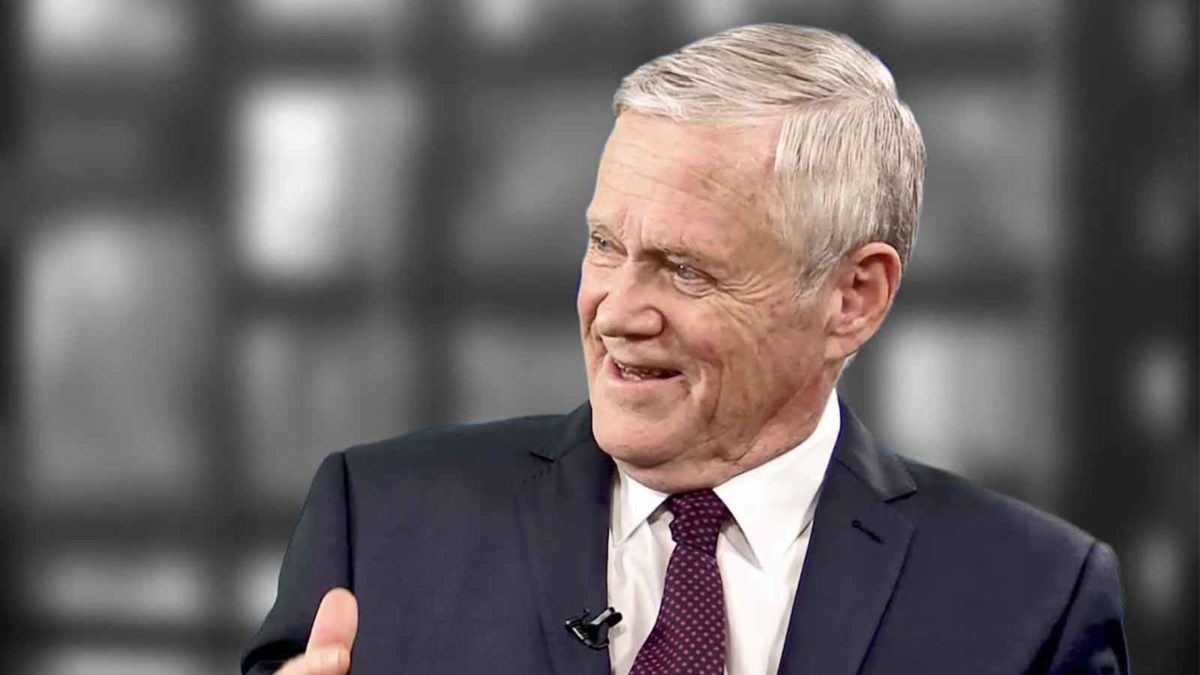Self-Test the Start of Noxopharm’s Standout Story
An essential part of developing a drug is the requirement for tests on human volunteers, usually starting in Phase 1. But for Noxopharm’s Veyonda drug, the first human volunteer was the company’s CEO and managing director, Dr. Graham Kelly.
It was 2014, and some of the top cancer specialists in Australia had told Kelly that the treatments on his metastatic prostate cancer had failed, and that the cancer had spread around his body. At that stage, feeling he had little to lose, Kelly decided to inject himself with the experimental formulation of what is now Veyonda, which had been developed using isoflavonoid material obtained from plant legumes.
The drug had not been successful in trials to that point. But Kelly believed that a change in how the drug was administered could change that. So he tried that theory out, on himself.
It worked – and Kelly has been in what he calls “long-term remission” ever since. And now, the miracle that happened in his body has been identified, and Veyonda is now testing its drug’s ability to bring that about in other cancer patients.
The phenomenon is called an “abscopal response,” in which a low dose of external radiation not only shrinks a targeted tumour, but triggers a whole-of-body immune response that results in other tumours melting away. Noxopharm is testing Veyonda in combination with low-dose radiotherapy to target the abscopal response.
“The abscopal response is where you irradiate one lesion – you’re not zapping the whole body, you’re just focusing the beam of radiation on one tumour exclusively, but it triggers an immune response in that one tumour, and that immune response goes all around the body and shrinks all the tumours around the body,” says Kelly.
Noxopharm has Veyonda heading into the DARRT-2 (Direct and Abscopal Response to RadioTherapy) phase 2 trial, for which the drug received investigational new drug (IND) approval from the US Food & Drug Administration (FDA) last week. The trial will test a combination of Veyonda and low-dose radiotherapy to induce abscopal anti-cancer responses in end-stage prostate, breast, lung cancers – patients for whom traditional treatment options such as chemotherapy and radiotherapy have failed.
The rationale is that low-dose external beam radiotherapy (EBRT) activates a local immune/inflammatory response within the irradiated tumour that is amplified by Veyonda, converting a local anti-cancer response into a systemic response.
The DARRT-2 trial is part of a full dance-card of trials for Veyonda, which Sydney-based Noxopharm is positioning as a companion drug for other anti-cancer therapies, in a program it calls “Four Pillars.” This oncology program is designed to test Veyonda as a treatment for a range of cancers, and attempt to detail its ability to boost survival outcomes, with the ambitious aim of seeing Veyonda eventually used as a standard companion drug in cancer therapy – and thus, enter multi-billion-dollar markets.
The four pillars are, in turn:
- Chemotherapy enhancement program (CEP)
- standard radiotherapy (DARRT-2)
- checkpoint inhibitor therapy (IONIC program)
- radioligand therapy
In chemotherapy enhancement, Noxopharm has chosen the rare cancer soft tissue sarcoma as its proof-of-principle indication for demonstrating that Veyonda can enhance chemotherapy, in combination with doxorubicin. In May, the US Food & Drug Administration (FDA) granted Veyonda investigational new drug (IND) status on the back of trial evidence that the drug – in combination with the chemotherapy drug doxorubicin – may increase generally poor response rates of sarcoma cancers to chemotherapy.
“Soft-tissue sarcomas are in that basket of cancers where there has been remarkably little advance in survival statistics over the past few decades, and the horizon looks to hold little change,” says chief executive officer Dr Graham Kelly. “What we have seen to date with Veyonda gives us confidence that a combination of Veyonda and doxorubicin has the capacity to make that change.”
In checkpoint inhibitor therapy, Noxopharm will shortly begin testing Veyonda in combination with Bristol Myers Squibb’s drug Opdivo (nivolumab), which is used to treat a range of tumour types, to determine whether Veyonda can overcome tumour resistance to drugs such as Opidivo. The trial, to be conducted in Australian hospitals, is titled IONIC-1.
In radioligand therapy, Veyonda is being tested as a companion drug to an experimental radiopharmaceutical drug known as Lu-PSMA (owned by Novartis), in a new therapy known as radioligand therapy, where very small amounts of radiation are delivered specifically to tumours, through the bloodstream. Radioactive isotopes are attached to a ligand (a molecule), usually an antibody, which can find cancer cells that have a particular surface molecule, and the radioisotope emits therapeutic radiation to kill the cancer cells. The radioligand can target cells anywhere in the body. This is the crucial attribute of radioligand therapy – that it delivers radiation to specifically targeted cancer cells, with a minimal effect on healthy cells.
“The whole principle is that you deliver very small amounts of radiation specifically to tumours, intravenously,” says Kelly.” If you’ve got a patient that’s got metastatic cancer, they’ve got multiple tumours around the body, you can’t put them under traditional radiotherapy showed him, because to get the radiation to all the different body parts, the radiation load on the patient would be too much. But radioligand therapy potentially delivers a small payload of radioactivity to every cancer cell in the body.”
For many aggressive, rare or late-stage forms of cancer, Kelly says radioligand therapy shows potential to be one of the few effective treatment options available that can provide life-enhancing treatment.
In May, Noxopharm shares surged 22 per cent on the release of data from a recent clinical trial that supports Veyonda drug as a companion drug in radioligand therapy. The study did not test Veyonda itself, but rather an experimental radiopharmaceutical drug known as Lu-PSMA-617 and owned by Novartis. The trial, the World Association of Radiopharmaceutical and Molecular Therapy (WARMTH) study, tested Lu-PSMA in 319 men with late-stage progressive metastatic castrate-resistant prostate cancer (mCRPC), who received the drug after prior therapies – it showed a median overall survival rate of 11.6 months
Noxopharm is conducting its own clinical trial, dubbed LuPIN, in which it is testing Veyonda in combination with Lu-PSMA-617. Noxopharm’s work with Lu-PSMA-617 in combination with Veyonda has shown a median overall survival (MOS) rate of 19.7 months.
This result was positive news for Noxopharm for two reasons, says Kelly. “First, it confirms that Veyonda in combination with Lu-PSMA-617 provides a considerable survival advantage over Lu-PSMA-617 alone. The second reason is that having Lu-PSMA-617 likely to come to market as a third-line therapy provides a clear development pathway now for Veyonda to come to market itself, with a distinct opportunity to make the Veyonda/Lu-PSMA-617 combination a new standard of care for end-stage prostate cancer. This well-tolerated combination therapy should increase the attractiveness of radioligand therapy for men with late-stage prostate cancer even more.”
Noxopharm is also trialling Veyonda in the treatment of septic shock, and in that light, it put the drug through the NOXCOVID trial, which reported in April that in 18 patients diagnosed with moderately severe cases of COVID-19, Veyonda was shown to protect against the progression of cytokine storm, a severe inflammatory condition associated with the worsening of the disease.
“We discovered, just before COVID-19 hit the world, that Veyonda was blocking something called STING (Stimulator of Interferon Genes), which happens to be an important way that the body recognizes that there is a problem,” says Kelly. “Cancer uses the STING mechanism, it exploits it for its own benefit, to spread around the body, but where STING signalling is relevant to COVID-19 is that, in the case of viral infections, it is responsible for antiviral responses, innate immune responses and pro-inflammatory cytokine release.
“Now, STING is a good thing – if you get any sort of virus, you need an immune response. Cytokines, which are proteins that regulate repair information, are involved in that. But STING is also one of the key triggers of cytokine storm, which, in a small percentage of people who’ve got lung damage, that inflammation doesn’t settle down, it just gets bigger and grows and grows – and that’s the cytokine storm. Ultimately, that cytokine storm leads to blood clotting, and the blood flow into the major organs stops. That’s what causes death in some COVID-19 patients,” says Kelly.
Noxopharm has established an offshoot company, Pharmorage, which is working with the Hudson Institute of Medical Research in Melbourne and the Australian National University (ANU) in Canberra, focusing on Veyonda’s potential role in a range of chronic inflammatory diseases as well as hyper-inflammatory diseases such as septic shock. The company sees its drug platform as having potential in a number of auto-immune diseases, which, just like its cancer applications, are in urgent need of better treatments.
Pharmorage is leveraging off the promise of Veyonda in blocking STING signalling, cytokine storm and septic shock in COVID-19 patients. Veyonda is showing what is possible, and Pharmorage seeks to build on that promise by developing drugs with greater focus on septic shock. Given the pre-eminence of septic shock as a cause of human death, this opportunity is too valuable and too important to ignore,” says Kelly.
“We share the growing view of many experts that the SARS-CoV-2 virus will move from pandemic to endemic status, in the way of the influenza virus, resulting in many seasonal deaths due to septic shock. Finding effective treatments to prevent septic shock has always been there, but suddenly it has become a major pandemic-led imperative.”
The cancer work Noxopharm is doing under the ‘Four Pillars’ program is “keeping us pretty busy,” he says, but there is also “some pretty exciting stuff” coming up in auto-immunity. “It’s a long pathway toward a successful drug, and we’re very confident in our drug, but there’s still a lot of work to do in Noxopharm before we can declare victory,” says Kelly.
Noxopharm listed in August 2016 at 20 cents a share, and has a record high trade of $1.32 in March 2018. More recently, from 13 cents at the depths of the “COVID Crash” in March 2020, the stock has moved to 70 cents, giving it a market capitalisation of $192 million.









